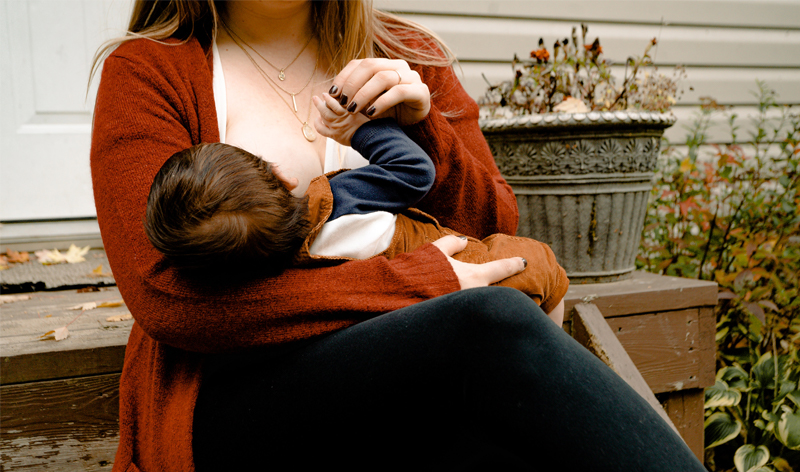3 Latching Tips for Better Breastfeeding

For moms that choose to breastfeed, it is an incredible time of nurturing for and bonding with your new baby. Even though breastfeeding is a natural process, not every step is instinctual, and babies will not always be able to latch correctly. While some discomfort when starting to breastfeed is normal, you may experience sore nipples or other pain as a result of poor latching.
Because many women encounter various difficulties while breastfeeding their newborns, it may be beneficial to consult with a lactation specialist who can help you understand what to expect and educate you on proper technique. In the meantime, here are some tips and things you should know in order to help your baby latch better and make breastfeeding easier for both of you.
1. Start Early
You should always start breastfeeding as soon as possible, which will likely be within the first hour of your baby’s birth. At this stage, and through the next few days, your body will be producing colostrum, an often thick yellowish “milk” that is packed with nutrients for your newborn. Even if your baby struggles at first, it is still beneficial for them to “practice” the action of latching and sucking while they are still awake.
In addition, you should wait to introduce pacifiers and other artificial nipples. Because they are of a different material and require different sucking methods, it may affect how your baby feeds from the breast or even result in a refusal to latch and cause other physical problems. If, however, your baby continues to have difficulty latching, you may want to seek out a lactation consultant for further guidance.
2. Know What a Good Latch Looks Like
Just because a baby looks like it has latched doesn’t always mean that it’s a good latch. Knowing the signs of a good latch ensures that your baby is getting the milk they need, and also prevents pain. As you bring your baby close to you, guide the breast and nipple area downward toward his or her mouth and encourage them to open by stroking the sides of their face.
As they try to attach themselves, their chin and nose should be both touching the breast. Additionally, their lips should be flared outward creating proper suction around both the nipple and areola. With a good latch, you should feel a slight tugging sensation and your baby sucking more slowly and deeply. With a poor latch, you might hear clicking noises that indicate poor suction and may lead to bruising if the baby is not fully attached to the nipple and areola. As the baby continues to feed, check the throat for movement as they swallow, and pay attention to signs that they are full or if they loosen and need to relatch.
3. Try Different Holding Positions
There is no single correct way to breastfeed, and if baby is often fussy or you are not very comfortable, there are numerous positions for you and your baby to breastfeed comfortably and safely. Don’t be afraid to experiment with different ways to hold your baby, especially as they continue to grow, as putting them in a more comfortable and stable position will allow them to relax and be more receptive to latching.
Though you should make sure your baby is always well-supported while breastfeeding, don’t forget about your own comfort. Make sure you are situated in a position where your muscles are relaxed, and if you need more support, add a pillow or two where you need them as you adjust.
As you prepare for the big day, taking time to educate yourself about breastfeeding and latching techniques can help ease any anxieties you may have. Then, when you are finally holding your bundle of joy in your arms, you will be able to understand the process of breastfeeding and savor this intimate bonding time with your baby.
